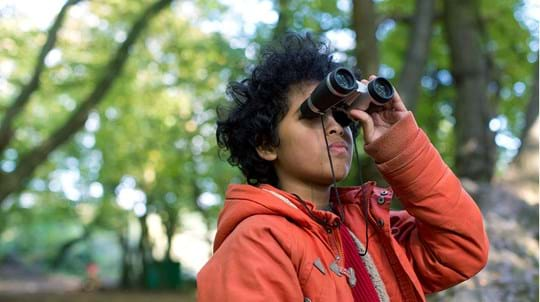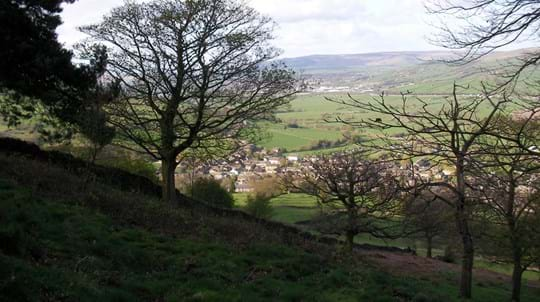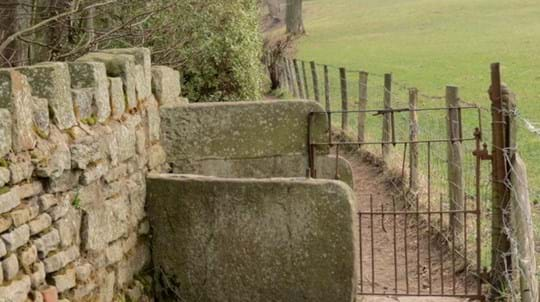
Skipton Castle Woods
Skipton

Woodland Trust wood
14.88 ha (36.77 acres)
SD990525
Explorer 2
OS Landranger 103
Next to one of Britain’s most popular medieval castles, Skipton Castle Woods is a rare, ancient woodland located just off the high street.
With a fascinating history that dates back a thousand years, stunning seasonal displays, amazing wildlife and a central location, Skipton Castle Woods is a must-visit if you’re in the area.
Features
- Parking nearby
- Public access
- Spring flowers
- Broadleaved woodland
How to get to Skipton Castle Woods
Skipton Castle Woods lies on the northern fringe of Skipton in North Yorkshire, next to Skipton Castle.
Spread over almost 15 hectares (37 acres), this unique site provides a wonderful green haven located just off the High Street.
From the M1 (northbound) take the M62 west, then the M606 to Bradford, A650 to Keighley, and A629 to Skipton. From the M6 (northbound) take the M65 to its end, then the A56 to Skipton. From the M6 (southbound) take the A65 to Skipton.
The main postcode for parking is BD23 1UA, at Skipton Castle’s Bailey Car Park.
The nearest train station is Skipton, around 1.2km (0.8 miles) from the wood. Services include trains to and from Leeds, Bradford, Carlisle, Lancaster and Morecambe. A single daily return service also operates between Skipton and London Kings Cross.
Visit National Rail for more information.
Skipton Bus Station is 0.8km (0.5 miles) from Skipton Castle Woods. Leave the bus station and turn left, proceeding to the opposite end of the High Street at Mill Bridge.
Visit Traveline for more information.
You can enter Skipton Castle Woods on foot from three different entrances.
The main access point is the Old Sawmill entrance, which can be reached via the elevated tow path at the side of High Corn Mill, just off the High Street. This entrance can usually be accessed by visitors with lightweight pushchairs and extends for a quarter of a mile before entering the woods.
The other entrances are The Bailey entrance - next to Skipton Castle's Bailey car park - and the Short Lee Lane entrance, which can be found at the north-west corner of the wood.
Access and facilities
There is no step-free access into Skipton Castle Woods. However, there are routes where the number of steps are limited. Public access on foot is available throughout the site, while permissive paths follow the Eller Beck (a tributary of the River Aire) and other watercourses, along with the eastern and north-western boundaries.
All pedestrian routes within the woodland are surfaced and in good condition. This includes a picturesque circular walk accessed via the Old Sawmill entrance, which is unfortunately unsuitable for wheelchairs due to steep slopes.
Other surfaced paths run along the north-western and eastern boundaries and exit the woodland at The Bailey. They offer excellent views over and along the wooded valley, but are narrower and have moderate to steep slopes and a flight of steps.
In wet weather or in instances of high water levels, some areas can become muddy.
There are a number of benches around the woodland, with the closest a quarter of a mile from the Old Sawmill entrance.
There is a pay and display car park with 193 spaces at Skipton Castle, BD23 1UA. This surfaced car park is located on a steep incline and is open daily from 9.30am-6pm.
Parking at Skipton Castle provides direct access to the upper path in Skipton Castle Woods via The Bailey entrance. You will find this entrance gate by leaving the car park on foot and turning left.
Parking in Skipton is available at two other pay and display car parks - one at the High Street and one on Coach Street. Both are a short distance from the wood and the town centre.
The nearest toilets to Skipton Castle Woods are at the High Street car park behind the town hall, where there is a RADAR-key accessible toilet. A small charge applies.
Visitors to Skipton Castle have access to public toilets on site, including disabled facilities (an admission charge applies).
Wildlife and habitats
Animals
Look to the skies for a glimpse of the many birds of prey soaring overhead, including buzzards, red kites and sparrowhawks. Kingfishers, herons and dippers can be spotted fishing in and around the water, while deer, bank voles and badgers are seen regularly throughout Skipton Castle Woods.
As night falls, the wood comes alive with five species of bat: the common pipistrelle, Natterer’s, Daubenton’s, brown long-eared and noctule.
Around some areas of the site you might see grazing livestock from neighbouring farmland.
Trees, plants and fungi
Walk around this ancient semi-natural woodland and admire the many broadleaved trees which stand tall here. Red oak, ash, beech, sycamore and a scattering of hornbeam and sweet chestnut – some of which are over 250 years old – can be found, as well as more than 160 species of flowering plants. Rare orchids, stunning bluebells, striking white wood anemone and sunny buttercups all bloom in Skipton Castle Woods.
Habitats
Most of Skipton Castle Wood’s ancient woodland is a mix of broadleaf trees but around four hectares in the northwest is designated as a Plantation on an Ancient Woodland Site (PAWS). This area contains conifer species such as Scots pine, larch and Norway spruce, with scattered broadleaves.
Skipton Castle Woods have been leased by the owners of Skipton Castle to the Woodland Trust for 75 years. Under our management the public has full access at all times.
About Skipton Castle Woods
History
Skipton Castle Woods was once part of a great hunting woodland that stretched across North Yorkshire. What remains of that great wood is now one of England’s rare ancient woodland sites.
The wood played a key role in Skipton’s industrial heritage, once providing timber, stone and, most importantly, water to feed the town's development. During the 18th and 19th centuries, water from Eller Beck was dammed and fed to a series of dams and sluices to provide water for the woollen, saw and corn mills that made up the town’s industry. This water also fed into the Springs Canal which in turn supplied the iconic Leeds and Liverpool Canal.
You can see evidence of Skipton's history in both the woodland and in the great buildings of the town. A woodland walk will take you along the watercourses that became the force behind the mills, and the industrial engineering that circulates the water is still visible and in use today. In High Corn Mill, the timber waterwheel made from local elm is still in working order. Pull the handle above the wheel to see it in action.

A lasting legacy
This wood is just one of many to have been protected by gifts in wills, securing it for generations to come. Your legacy gift could also make a real difference to woods, trees and wildlife.
Learn what your gift could meanThings to do at Skipton Castle Woods
Walking
Set in a river valley with both upper and lower paths covering just over 3km (1.9 miles), there are lots of ways to explore Skipton Castle Woods. Follow the river-valley route, ideal for spotting birdlife by the water, with an optional upper path extension that provides brilliant views over neighbouring farmland. The longest walking route is the Earl of Thanet trail, where you can discover the industrial history of the woods.
You may see grazing cattle from adjoining farms on your walk. Please do not approach or feed livestock and keep dogs under close control.
Skipton Castle
Why not visit Skipton Castle as part of your walk? Must-sees include the castle's enormous timber portcullis entrance, and the wide span of exposed oak beams and trusses in its banqueting hall. Don't forget to also spend some time with Skipton Castle’s famed ancient yew tree, planted by Lady Ann Clifford in 1649.
Children's activities
Skipton Castle Woods is a wild playground, and the perfect place for kids to get closer to nature with activities such as the Skipton Castle woodland board game. However your little ones choose to explore the woods, they are sure to have a fantastic time.
Our top three things to try
- Take the Sougha Gill Challenge: with over fifty steps from the valley floor to the paths above, this climb will get your heart pumping and your pulse racing.
- Immerse yourself in the tree canopy on the upper path on The Bailey side of the woodland.
- Spot seasonal highlights: in spring, the whole woodland is full of wild garlic, while in October through to November don't miss the reds and golds of autumn.
Take a virtual tour of Skipton Castle Woods:
Download the Skipton Castle Woods app
For guided walking trails, wildlife guides, accessibility information and more, get the Skipton Castle Woods app for Android or Apple.
Discover more things to do at Skipton Castle Woods

Visiting woods
Walking dogs in our woods
Dogs are welcome for walkies in our woods. Take a look at our tips and guidelines for ensuring we keep our woods safe and special for dogs and wildlife.

Visiting woods
Things to do in the woods
Go on an adventure. Get closer to nature. Uncover history. Discover ways to explore the UK's woods whatever the season.

Visiting woods
Events
Discover events at our woods and the festivals and fairs you can find us at soon.


















































